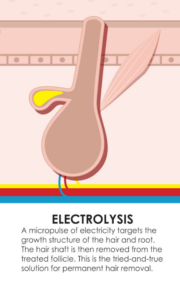Services: Hair removal
Hair removal service - TH&WC
Hair removal is an integral part of gender-affirming care for Transgender, Gender Non-Conforming and Itersex people and their Mental Health. We provide licensed electrologist to provide this service. Your level of comfort is important to us. Many of our electrologist are TGI to assist in those services for you.


quality matters!
Precision Lasers & Electrolysis
Lasers are designed to target dark, coarse hairs while leaving the surrounding lighter hair undamaged.
Our Hair Removal technicians are fast
Each laser machine has different speeds to meet the required purpose-namely: removing unwanted hair. The laser can treat an area of approximately the size of a dime to a quarter each second. Small areas (such as the upper lip) can be treated in less than a minute, and large areas (such as the back or legs) may take up to an hour.
no problem to be curious, we answer your question.
Lasers require more treatments over the quadrant of the area in less time. They require three or more treatments to permanently remove the unwanted hair. The FDA only approves electrolysis as permanent; however new laser technology is able to merely reduce hair.
Laser hair removal is a medical procedure that requires medical training. The State of California only allows a Registered Nurse, Nurse Practitioner, Physician Assistant, or Medical Doctor to provide treatments. This is to ensure that the patient is being served by a medically-qualified person, who has been trained in the basic medical standards. A degree and proper licensing does not make them automatically qualified; as further training is necessary to prevent potential injury.
One hour prior to treatment, it is important to apply numbing cream to sensitive areas targeted for treatment.
The laser hair removal machine is designed to be used on people with dark hair. The lighter the skin and darker the hair, the more likely that the hair will not return. The darker the skin and the darker the hair, the lower the frequency; therefore more treatments are often required. The technology currently used by laser hair removal machines is not effective on white, red, and blond hair. In such cases, the patient must resort to electrolysis for permanent removal.
The pulse light from the laser hair removal machine uses an intense pulse light, that penetrates the top layer of the skin. It is designed to damage the root of the hair plexus. Damage to the hair plexus is then ejected from the skin by the body as a way of naturally protecting the body from infection. The hair plexus has a specialized nerve receptor that can create stimulation and sensation.
When a person is on stimulants prior to treatment, it can make these specialized nerve receptors hyper-vigilant- thereby increasing the pain. This sometimes makes the treatment for the patient painful, which can discourage future treatments. It is therefore strongly encouraged to refrain from using stimulants.
It is important to protect the skin after treatment while the skin while it is rejuvenating after treatment. Avoid direct sun (during activities like gardening, sun tanning, hiking, and anything that involves high-level exposures to ultraviolet sun rays. It can damage the skin and increase the likelihood of cancer.
Electrolysis is a method of removing hairs individually from the face and body. An professional technician must go to school and be licensed by the California Board of Cosmetology. Electrolysis uses a device with a small metal probe that is inserted down the shaft of the hair to the hair plexus. There, a small electrical current is used to destroy the hair at it’s root. The individual hair is then ejected from the body. Electrolysis can be used on any hair. Bear in mind that this is an extremely slow process. Each electrolysis session can last up to two hours, as it must operate on a small space (the size of a quarter) at a time.
Electrolysis began in 1875. It was invented by Dr. Charles Michel, an ophthalmologist in St. Louis who devised this system to remove his patient’s painful ingrown eyelashes. The procedure has grown over time into a consumer trade; and is now used for cosmetic purposes.
Gender Identity disorder first appeared as a diagnosis in the DSM-III (1980), where it appeared under “psychosexual disorders”. This was used only for the childhood diagnosis. Over time, it began to be used for the treatment of gender dysphoria. Laser hair removal had been performed experimentally for about twenty years before becoming commercially available in 1995. As laser hair removal technology is still improving, electrolysis often focuses on the hair that the laser cannot treat effectively.
